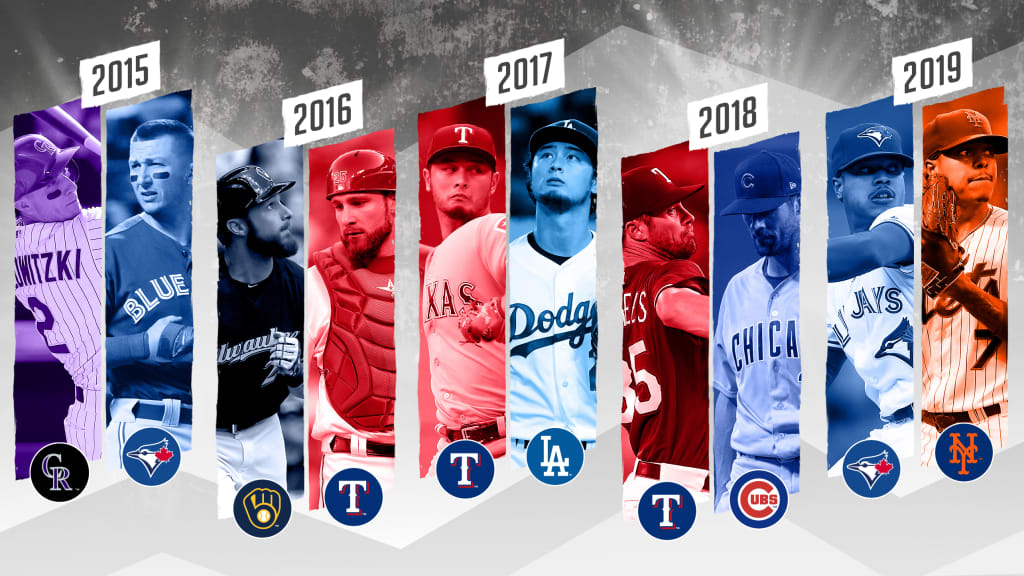
One constant of every Trade Deadline, even this most unusual one, is that every seemingly consequential trade will be sold as "The Biggest Trade Ever." This has always been the case -- there was a time when Mike Bordick going to the Mets (look it up!) felt like it would change the direction of human civilization -- but it has very much accelerated in a social media age in which every trade is rumored about, leaked and then dissected. You can never outrun the hype.
You can, however, outlast it. So, today, to temper your excitement about whatever trades are about to go down (only slightly, we promise), we thought we would take a look at a trade from each of the past five seasons that felt, at the time, like it was going to change the world … but didn’t end up meaning that much at all. Time is the ultimate tell: Eventually, a lot of these trades end being more about how we talk about them than how much they really matter. And you know what? Sometimes the talk is enough.
2019: Blue Jays trade RHP Marcus Stroman to Mets for LHP Anthony Kay and RHP Simeon Woods Richardson
This was a true shocker of a trade, because Stroman was emerging as a terrific pitcher that any contending team could use for the stretch run. But it turned out the Mets, who were a fringe contender at the time of the deal, grabbed him, mostly because they imagined him being a big part of the 2020 rotation. (Stroman had one more year on his contract.)
Stroman was perfectly fine for a Mets team that was better in September than you might have thought but still not all that close to a playoff spot, and then he elected not to play this season, making that extra season the Mets were so excited about entirely irrelevant. Kay is a handy reliever for the Blue Jays this year, and Richardson is still a prospect the Blue Jays are hopeful about … but on the whole, all this talk about this trade seems a bit beside the point now.
2018: Rangers trade LHP Cole Hamels to Cubs for RHP Eddie Butler, RHP Rollie Lacy and OF/1B Alexander Ovalles
When the Cubs made this trade, they had the best record in the National League and seemed to be cruising to the NL Central title. Hamels, the 2008 World Series MVP, was seen as a postseason boost for a team that be looking to make a bunch of noise in October. Hamels was good for the Cubs -- his ERA for them was lower than it was for any other team in his career -- but the team fell apart in the final week of the season and ended up stuck in the NL Wild Card Game against Colorado. Hamels actually did pitch in that game, two scoreless innings, but the Cubs lost and they haven’t been to the playoffs since. Two years later, Hamels is with the Braves, but he hasn’t pitched yet this year due to an injury.
2017: Rangers trade RHP Yu Darvish to Dodgers for OF Willie Calhoun, RHP A.J. Alexy and OF Brendon Davis
Do you remember where you were when this tweet went out?
This trade blew our minds when it happened. Los Angeles, already considered the best team in baseball and the most likely Dodgers team to win a World Series in nearly 30 years, added one of the top pitchers around. They were sure to win that World Series now, and if they had to mortgage their future to do it, so be it. Well, as it turns out, Darvish was fine, if hardly dominant, for the Dodgers in the regular season, but in the first two rounds of the playoffs, he was incredible, winning both of his starts and giving up only one run in each.
So then, the World Series, what the Dodgers had been waiting for. And there, Darvish was shelled by the Astros, giving up nine runs in 3 1/3 innings over two starts, including Game 7. There have always been whispers about that series in light of the Astros’ sign-stealing scandal that was revealed over the offseason, but it wouldn’t matter for the Dodgers or Darvish after that: He signed with the Cubs afterward, struggled for a while and is now incredible again.
As for those prospects? Calhoun is on the IL for the Rangers with a .172 average in 18 games, Alexy is the Rangers' 21st-ranked prospect, according to MLB Pipeline, and Davis is unranked. Honestly, the only thing that lasted about this trade was the tweet.
2016: Brewers trade C Jonathan Lucroy and RHP Jeremy Jeffress to Rangers for OF Lewis Brinson, RHP Luis Ortiz and OF Ryan Cordell
In many ways, this trade is more famous for the non-trade that preceded it. Lucroy was originally traded to the Indians, but he vetoed it with his no-trade clause before accepting the trade to the Rangers. Lucroy was an MVP-caliber player until the trade, and he was perfectly fine for Texas, hitting .276 with 11 homers in 47 games. He had a forgettable performance in the American League Division Series loss to Toronto, though, going 1-for-12, and he struggled mightily in 2017, ultimately being traded to Colorado later that season. Lucroy’s career never quite recovered, and he showed up for just one at-bat with the Red Sox this year.
Meanwhile, Jeffress was back in Milwaukee the very next year. Brinson was a top prospect at this time, but he struggled with Milwaukee and was ultimately the centerpiece of the Christian Yelich trade; he hasn’t been much better with Miami. Nothing much ended up happening out of this at all.
2015: Rockies trade SS Troy Tulowitzki and RHP LaTroy Hawkins to Blue Jays for SS Jose Reyes, RHP Miguel Castro, RHP Jeff Hoffman and RHP Jesus Tinoco
Kids won’t remember this, but there was a time in baseball history when Tulowitzki showed up in trade rumors on a daily basis. It seemed like every team was connected to him at one point. But the Blue Jays landed him, and when they did, a few days before they would trade for David Price, it was clear they were all-in: Many wondered if they had constructed a super-team. That super-team ended up losing in the AL Championship Series to the Royals, and Tulo was never the player he was in Colorado again, despite having nearly $100 million left on his contract when Toronto traded him.
Reyes was back with the Mets by 2016, and none of the other players added up to much. The trade felt like a culmination of years of anticipation when it happened, but in the end, it did not have much of an impact.
